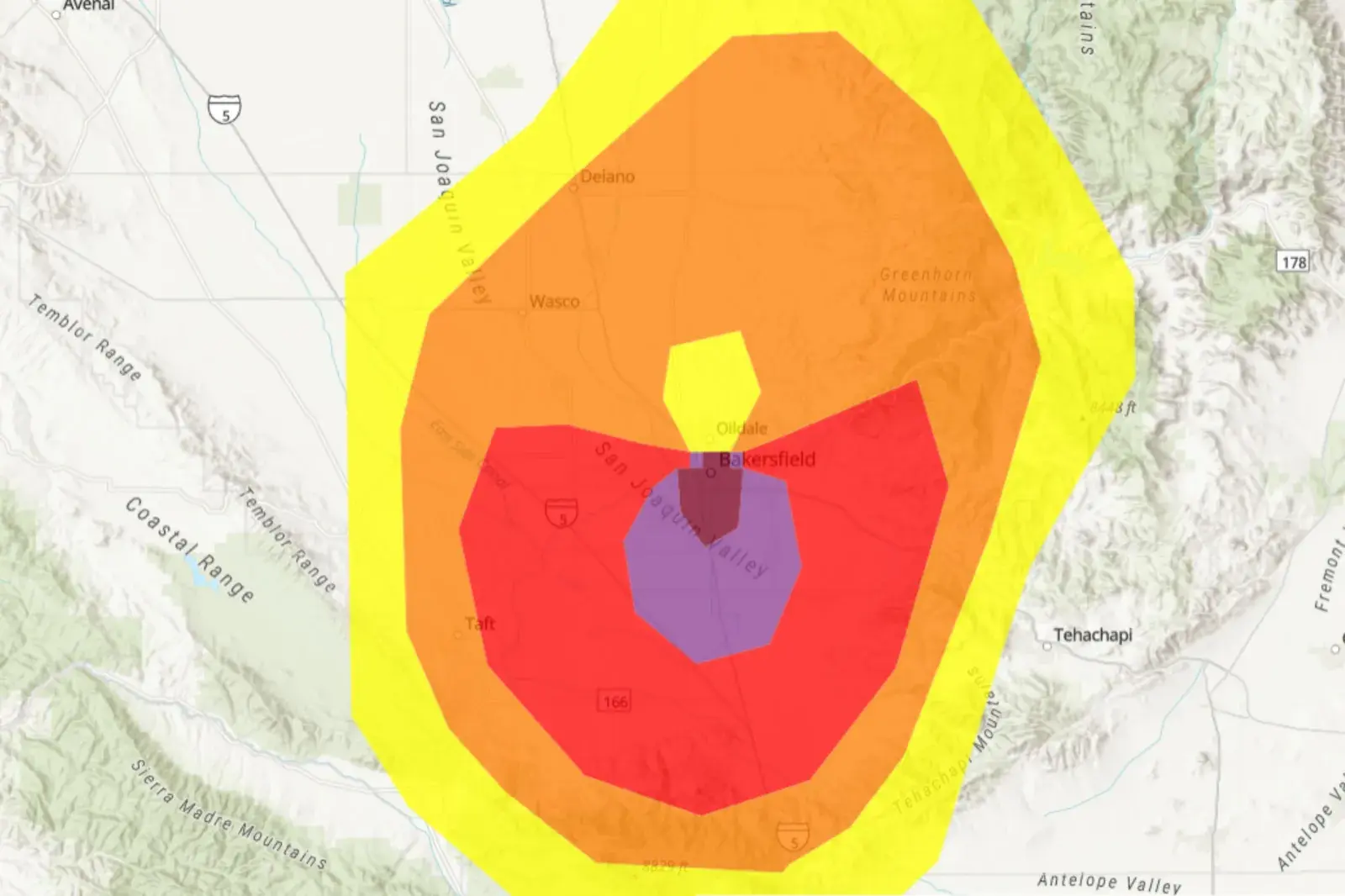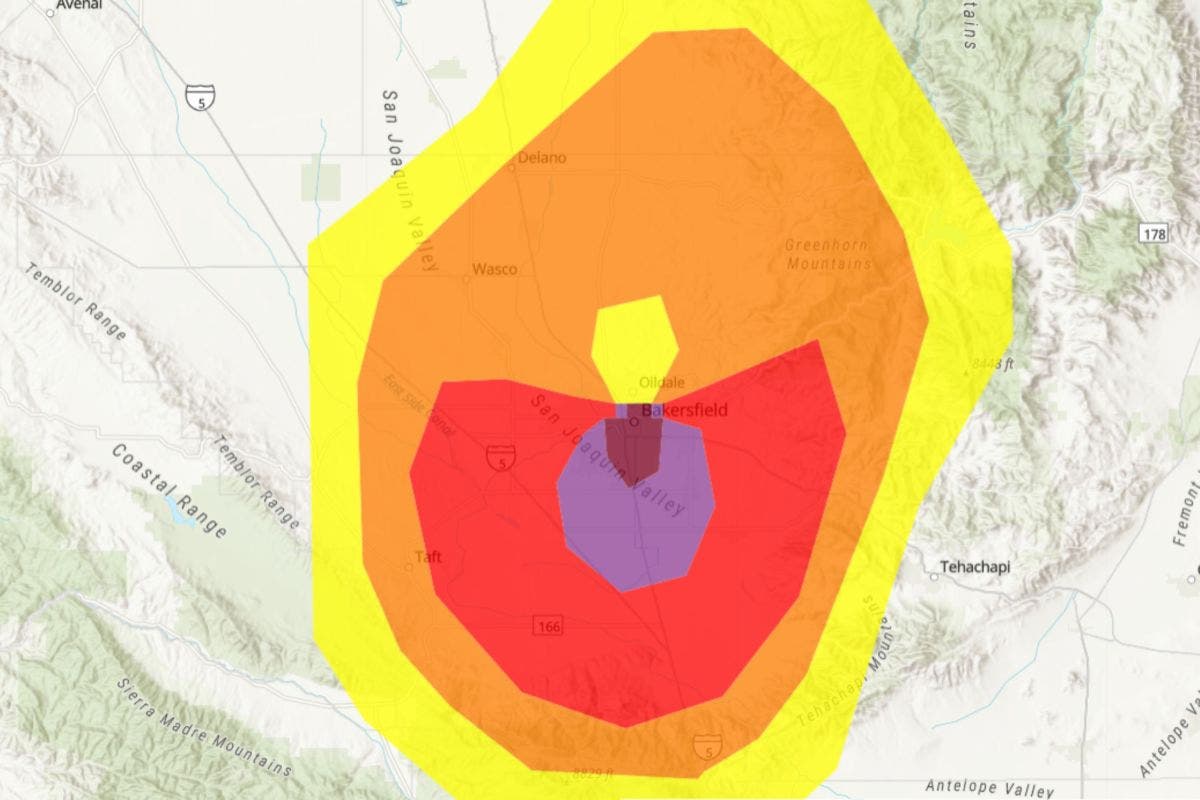Residents in Bakersfield, California, faced potentially harmful levels of air pollution in the early hours of Tuesday morning, a live map from AirNow showed.
AirNow, an air quality data resource, is a partnership between the Environmental Protection Agency (EPA), National Oceanic and Atmospheric Administration, and other agencies.
Why It Matters
Experts caution that deteriorating air quality heightens health risks for vulnerable populations, such as older adults, children and individuals with respiratory illnesses.
What To Know
Early on Tuesday, EPA mapping showed levels of fine particle (PM2.5) and ozone pollution in the “hazardous” category centered over Bakersfield.

When air quality reaches these levels, the EPA advises everyone to avoid all physical activity outdoors. It advises sensitive groups to remain indoors and keep activity levels low.
The Air Quality Index measures air pollution on a scale from 0 to 301 and above:
0—50 (Green): Good—Air quality is satisfactory, and air pollution poses little or no risk.51—100 (Yellow): Moderate—Air quality is acceptable. However, there may be a risk for some people, particularly those who are unusually sensitive to air pollution.101—150 (Orange): Unhealthy for Sensitive Groups—Members of sensitive groups may experience health effects. The general public is less likely to be affected.151—200 (Red): Unhealthy—Some members of the general public may experience health effects; members of sensitive groups may experience more serious health effects.201—300 (Purple): Very Unhealthy—Health alert. The risk of health effects is increased for everyone.301 and higher (Maroon): Hazardous—Health warning of emergency conditions. Everyone is more likely to be affected.
Elsewhere in California, air quality alerts had been issued for southwest and western potions of Imperial County, as well as the Coachella Valley due to “harmful levels of particle pollution from windblown dust” during Tuesday morning.
“Particle pollution can get deep into the lungs and cause serious health problems such as asthma attacks, heart and lung disease symptoms, and increased risk of lung infections,” the alert said. “Everyone can be affected, but sensitive groups such as people with lung or heart disease, older adults, people who are pregnant, children, and those who spend a lot of time outdoors are at greater risk.”
What People Are Saying
The Environmental Protection Agency said on its website: “Short- and/or long-term exposure to air pollution has been associated with a wide range of human health effects including increased respiratory symptoms, hospitalization for heart or lung diseases, and even premature death. Hazardous (or toxic) air pollutants may cause cancer or other serious health effects, such as reproductive effects or birth defects.
“Specific groups within the general population may have a greater risk of pollution effects due to a variety of factors. For example, children often are more vulnerable to pollutants.”
What Happens Next
Air quality maps are updated regularly.
Update 10/14/25, 8:48 a.m. ET: This article was updated with additional information.

